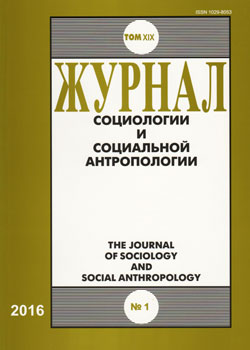Приверженность алкоголю в России: социальные различия и тенденции в 1990-е и 2000-е гг.
Ключевые слова:
Аннотация
This article investigates the issues of alcohol consumption in 1990s-2000s in Russia. Alcohol consumption, being one of the key causes of the health crisis in Russia in the 1990s still remains a prior risk factor for public health. The data of the Russian Longitudinal Monitoring Survey (fourteen representative annual surveys) has been analyzed applying statistical methods of multilevel linear modeling. During the studied period there have been distinct social variances in the alcohol consumption of different socio-demographic groups of the Russian society. Having analyzed the data we can resume that alcohol consumption is traditionally higher in men. However the alcohol consumption in women has increased significantly during the 2000s. Educational inequalities proved to be stable in 1990-2000s. The most pronounced variations in alcohol consumption have been found in income groups. The findings show that the prevalence of alcohol consumption has been steadily increasing during 1994-2009. It became evident, that the rate of this increase has varied from one social stratum to another. Two lower income groups of the population have shown the most intensive increase of alcohol consumption. The factor of per capita income growth has had a significant effect on alcohol consumption in the Russian society and to a great extent explains the aforementioned social differences and trends.
Опубликован
2016-02-20
Как цитировать
Озерова, О. (2016). Приверженность алкоголю в России: социальные различия и тенденции в 1990-е и 2000-е гг . ЖУРНАЛ СОЦИОЛОГИИ И СОЦИАЛЬНОЙ АНТРОПОЛОГИИ, 19(1), 194–208. извлечено от http://jourssa.ru/jourssa/article/view/466
Раздел
Научные сообщения

